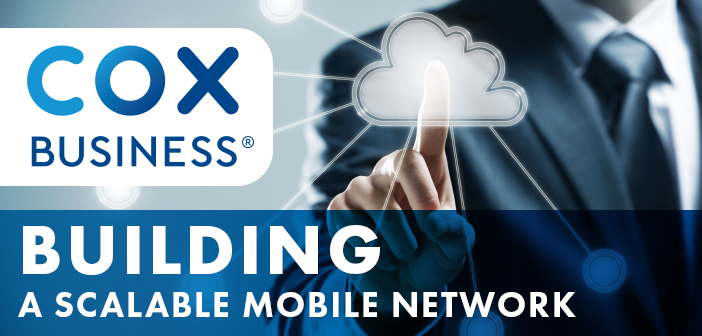
In the wake of COVID-19 there has been a clear shift in how we work. There are many reasons behind this, but we also understand how mobility supports business continuity objectives and solves the challenges of hiring and retaining top talent. Without geographical restrictions, organizations can meet their goals and adjust to changing times.
Cox Business (coxbusiness.com) offers solutions to the challenges posed by mobility initiatives, allowing IT teams to focus on business-critical objectives. Forming a partnership expands the capabilities of your team, helping to deploy and integrate technologies quicker while optimizing reliability and efficiency. However, it’s vital to develop benchmarks to measure success and help leaders understand the return on investment (ROI). Build your strategic plan by outlining criteria for the following areas.

Security
CyberEdge’s Cyberthreat Defense Report found 85% of organizations suffered from a successful cyberattack last year. Your enterprise architecture changes your security posture, so you need to understand the minimum security requirements for your organization. Security benchmarks should consider specific metrics and understand threat levels to prioritize them. Cox Business can help determine priority levels for network endpoints versus the edge, data encryption, user authentication, and cyberattack prevention.
Intelligent Networking
The speed of digital innovations means inflexible infrastructure is a thing of the past. Changing or increasing without redesigning the infrastructure and hardware is essential. An intelligent network can evolve and proactively respond to changes on demand. An SD-WAN is a flexible network solution for optimizing traffic for remote and mobile workers. Enterprises may use SD-WAN to replace outdated architecture or as an overlay to legacy networks such as MPLS or metro Ethernet. It also provides a pathway to Secure Access Service Edge (SASE) and Zero-Trust models. Your organization should identify benchmarks for SLA’s, QoE and QoS.
Business Continuity
Mobility architecture must prioritize continuity. A modern complete business continuity disaster recovery (BCDR) plan includes several solutions such as automatic failover to wireless, backup as a service and disaster recovery as a service. Identify your ideal Recovery Time Objective (RTO) and Recovery Point Objective (RPO) times. Also consider your desired uptime goal and the compliance standards your company wants to reach.
Cloud Environment & Applications
Moving workloads to a cloud environment helps provide flexibility, allowing employees to complete tasks without coming into the office. It also supports bring-your-own-device (BYOD) policies, reducing investments required for additional hardware. Your mobile workforce accesses their digital workspace with a secure, single sign-on (SSO) through solutions such as Identity as a Service (IDaaS). They can work from a virtual desktop and use their applications in the cloud.
Dedicated Internet Access
Whether your organization takes a cloud-first approach, deploys SD-WAN or uses a combination of both, Dedicated Internet Access (DIA) ensures your network can support business-critical cloud applications. Review your company’s high-capacity applications driving the need for DIA fiber including upload and download requirements. Think about the impact of symmetrical speeds on productivity and employee experiences.
The future of mobility is happening now and Cox Business experts are here to guide your organization through the complex challenges that come with it.
Learn more at coxbusiness.com

